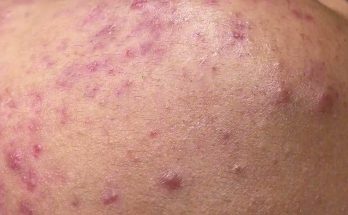Massive orbital myiasis arising from nasal myiasis in an Indonesian patient with diabetes
Abstract
Purpose
Observations
Conclusions and importance
Keywords
1. Introduction
2. Case report

Fig. 1. Massive larvae in left orbit.

Fig. 2. Eyelid droop and skin loss were identified in this patient.

Fig. 3. Extracted larvae.

Fig. 4. Paranasal CT-Scan showed insects in the left maxillary and ethmoidal sinuses, nasal cavity and left orbital cavity. Bone destruction (left maxillary and ethmoidal sinuses wall) and nasal septum destruction were also identified.

Fig. 5. Gross appearance of the larva extracted from the left orbit. (B) Parasitologic examination revealed the larvae to be Chrysomya bezziana (marker points toward posterior spiracle of the larva).

Fig. 6. Post-treatment of the myiasis.
3. Discussion
4. Conclusion
Patient consent
Acknowledgements and disclosures
Funding
Conflicts of interest
Disclosure
Authorship
Acknowledgements
Appendix A. Supplementary data
Research data for this article
References
- 1
Hope FW. 1840. On insects and their larvae occasionally found in the human body. Trans R Entomol Soc Lond 1840:256-271.
- 2
OphthalmomyiasisBr J Ophthalmol., 52 (1) (1968), p. 64
- 3
Disease Caused by Arthropods and Other Noxious Animals(eleventh ed.), Rook’s Textbook of Dermatology, vol. 2, Blackwell Science, Oxford, UK (2012)pp.33.1-33.11.63
- 4
Clinical microbiology reviewsAm SocMicrobiol (2012), pp. 79-105
- 5
Nasal myiasis by fruit fly larvae: a case reportEur Arch Oto-Rhino-Laryngol, 263 (2006), pp. 1142-1143
- 6
Orbital myiasis: a case reportInt J Oral Maxillofac Surg, 30 (2001), pp. 83-84
- 7
Fulminant orbital myiasis in the developed worldBr J Ophthalmol, 91 (2007), pp. 1565-1566
- 8
Extensive myiasis infestation over a malignant lesion in maxillofacial regionInt J pharmaceutical and biological archives, 3 (2012), pp. 530-533
- 9
Destructive ocular myiasis in a noncompromised hostIndian J Ophthalmol, 38 (1990), pp. 184-186
- 10
Physician’s Guide to Arthropods of Medical ImportanceCRC Press LLC, Florida (2003)7. Goddard J. ( 2003) Physician’s guide to arthropods of medical importance. CRC Press LLC, Florida
Cited by (6)
-
Management of nasal myiasis and type 2 diabetes mellitus: A rare case and review article
2021, International Journal of Surgery Case ReportsCitation Excerpt :Lack of control of diabetes might be another predisposing factor to this patient to larval habitation owing to diabetic neuropathy. It might begin that larvae first infested the patient’s nasal cavity then the nasal lining while the patient was not alert [4]. Nasal myiasis occurred when flies lay their eggs on injured nasal cavity mucosa.
-
Phthiriasis palpebrarum, thelaziasis, and ophthalmomyiasis
2020, International Journal of Infectious DiseasesCitation Excerpt :Padhi et al., 2017) Certain local customs, such as eating raw meat or applying live animals to the skin as medicine, can easily transmit parasites directly into the body. In those injured or seriously ill, open wounds, suppurative lesions, and ulcers secreting discharge or blood remnants (Lubis et al., 2019; Kamath, 2000) can attract flies, allowing maggots to inhabit and breed in tissue under poor host health and hygiene conditions. Cattle rearing, contact with pets, and exposure to mountainous terrain in the rainy season increase the vulnerability of humans to ocular parasites. (
-
A case report of nasal myiasis caused by Musca domestica in a patient with respiratory failure
2024, SAGE Open Medical Case Reports -
Nasal Maggot Infection in a Patient With Nasal Non-Hodgkin’s Lymphoma
2023, Ear, Nose and Throat Journal -
A rare nasal myiasis in a patient with diabetes mellitus
2022, Bali Medical Journal -
Cryptic myiasis by chrysomya bezziana: A case report and literature review
2020, Turkish Journal of Ophthalmology


